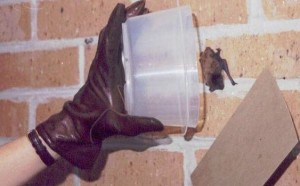No doubt about it: it is bat season everywhere including Putnam County. Bat populations normally rise in the warmer months and this year has been no different. So far this summer 61 bats have been brought in for testing to the Putnam County Department of Health. That is up about 35 specimens from last year at this time, and a sign that the capture-the-bat message is getting out. Unfortunately the health department still hears about bats being captured and then set free outside, leaving residents undergoing treatment that probably could have been avoided, if the bat had been available for testing.

“This increase in turned-in bats is great news,” explains Commissioner of Health Allen Beals, MD. “It means we are doing our job and getting the message out that capturing a bat found in a home is so important. If the bat cannot be tested, many prophylactic treatments to prevent rabies are necessary. When the bat is caught and turned into the health department, we test it and can avoid the unnecessary and costly treatments.”
Rabies remains one of the most deadly viruses, with a 100 percent fatality rate if untreated. Fortunately, post-exposure prophylactic treatment is completely effective if started before symptoms begin.
The health department’s specimen prep room, where the bats are prepared for testing, opened last January making this summer the first season it has been operational. The dedicated, consolidated space provides proper ventilation for handling noxious materials. Renovations were completed with the support of County Executive MaryEllen Odell, by Putnam County personnel, making it highly cost effective. Together with the capture-the-bat initiative and the Feral Cat Task Force, the prep room enables the PCDOH to reduce the number of expensive rabies treatments in the county.
To safely capture a bat, watch the instructional demo (below) from New York State Department of Health (NYSDOH) available on the Putnam County Department of Health’s website and the NYSDOH website. The video has also been posted on the PCDOH social media sites, Facebook and Twitter.
All possible bat exposures should be reported immediately by calling 845-808-1390. (If it is after hours, press extension “3” for instructions.)
For more information, visit the PCDOH website or visit the social media sites on Facebook and Twitter.
